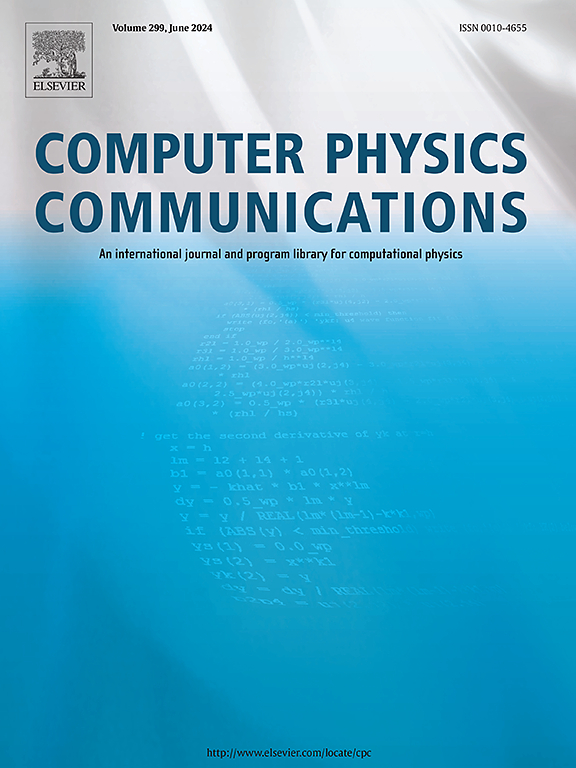AutoEncoders latent space interpretability in the light of proper orthogonal decomposition: Machine learning of periodically forced fluid flows
IF 7.2
2区 物理与天体物理
Q1 COMPUTER SCIENCE, INTERDISCIPLINARY APPLICATIONS
引用次数: 0
Abstract
This work explores the learning and interpretability challenges of Autoencoders (AEs) and Variational Autoencoders (VAEs) when applied to the reconstruction of dynamic velocity fields governed by the Navier-Stokes equations. Throughout model training, the emphasis is on understanding how flow features are encoded into the latent space and how this impacts the interpretability and usability of the models. Based on a parametric study of forced flows, i.e. flows around an oscillating cylinder, as well as a von Kármán swirling flow, we first investigate the trade-offs between reconstruction accuracy and regularization in VAEs. We confirm that increasing the regularization parameter degrades reconstruction quality, which underscores a significant limitation of the Gaussian prior from this point of vue. A comparative analysis reveals that standard AEs exhibit quite robust training behaviour, while VAEs show a sharper transition between non-learning and learning regimes, depending on the amount of regularization. By leveraging Proper Orthogonal Decomposition (POD) to identify characteristic flow structures and frequencies, we establish connections between latent space organisations and POD modes. To address the interpretability challenge, we then perform a symmetry analysis of latent spaces, stating equivariance relations between latent and physical variables. Despite reduced reconstruction precision, VAEs show greater fidelity in preserving these relationships. Building on this, we propose a clustering-inspired method to interpret latent representations, identifying characteristic states from temporal POD time coefficients to provide deeper insights into latent space structure and untangling. This work highlights pathways for autoencoder's analysis methodological advancements, emphasizing the critical need to align latent space representations with physical interpretation for broader applicability in fluid dynamics.
基于适当正交分解的自编码器潜在空间可解释性:周期性强迫流体流动的机器学习
这项工作探讨了自编码器(ae)和变分自编码器(VAEs)在应用于由Navier-Stokes方程控制的动态速度场重建时的学习和可解释性挑战。在整个模型训练过程中,重点是理解如何将流特征编码到潜在空间中,以及这如何影响模型的可解释性和可用性。基于强迫流动的参数化研究,即围绕振荡圆柱体的流动,以及von Kármán旋转流动,我们首先研究了VAEs中重建精度和正则化之间的权衡。我们证实,增加正则化参数会降低重建质量,这强调了高斯先验在这一点上的显著局限性。一项比较分析表明,标准ae表现出相当稳健的训练行为,而VAEs则在非学习和学习机制之间表现出更明显的过渡,这取决于正则化的数量。通过利用适当正交分解(POD)来识别特征流结构和频率,我们建立了潜在空间组织与POD模式之间的联系。为了解决可解释性的挑战,我们对潜在空间进行了对称性分析,说明了潜在变量和物理变量之间的等方差关系。尽管重建精度降低,但VAEs在保留这些关系方面表现出更高的保真度。在此基础上,我们提出了一种聚类启发的方法来解释潜在表征,从时间POD时间系数中识别特征状态,从而更深入地了解潜在空间结构和解缠结。这项工作强调了自编码器分析方法进步的途径,强调了将潜在空间表示与物理解释相结合的关键需要,以便在流体动力学中具有更广泛的适用性。
本文章由计算机程序翻译,如有差异,请以英文原文为准。
求助全文
约1分钟内获得全文
求助全文
来源期刊

Computer Physics Communications
物理-计算机:跨学科应用
CiteScore
12.10
自引率
3.20%
发文量
287
审稿时长
5.3 months
期刊介绍:
The focus of CPC is on contemporary computational methods and techniques and their implementation, the effectiveness of which will normally be evidenced by the author(s) within the context of a substantive problem in physics. Within this setting CPC publishes two types of paper.
Computer Programs in Physics (CPiP)
These papers describe significant computer programs to be archived in the CPC Program Library which is held in the Mendeley Data repository. The submitted software must be covered by an approved open source licence. Papers and associated computer programs that address a problem of contemporary interest in physics that cannot be solved by current software are particularly encouraged.
Computational Physics Papers (CP)
These are research papers in, but are not limited to, the following themes across computational physics and related disciplines.
mathematical and numerical methods and algorithms;
computational models including those associated with the design, control and analysis of experiments; and
algebraic computation.
Each will normally include software implementation and performance details. The software implementation should, ideally, be available via GitHub, Zenodo or an institutional repository.In addition, research papers on the impact of advanced computer architecture and special purpose computers on computing in the physical sciences and software topics related to, and of importance in, the physical sciences may be considered.
 求助内容:
求助内容: 应助结果提醒方式:
应助结果提醒方式:


